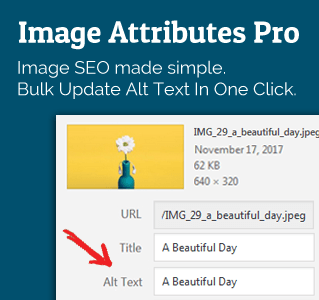It is hard to create enjoyable content – you need to be relatable, yet topical; you need to create something that will connect you and your audience, but also that promotes your product, or adds to your brand image.
Using images is one of the more important SEO aspects that many people do not think about, and the next step is optimizing those images for your SEO purposes.
A good image will need to be relevant to the topic that you are writing about. The quality of the image itself must be high, both in artistic value and in technical details, with good resolution and size so that it can be accessed on a variety of devices.

Using stock photos is a good starting point as they can cover all your most important bases, but you’ll need a custom solution eventually.
So, what are the most important things you need to know about Images and SEO.
Things to Understand:
Images Will Impact Your Website: Using images will put a strain on your website, and even if you use a professional server hosting solution, big images will require time to download and open – so optimizing their size and compression is the key.
Tip: Use popular tools to determine what aspects of your website are slowing it down; if the problem is connected to images, think about reducing their size, increasing compression and use lazyloading.
Good Images Increase SEO: Using good and relevant images will increase your rankings, especially if your visitors feel the connection.
For example, Pinterest revolves around good and creative images, and if your business is very visual, having good images is half the work there.
Users Love Images: A nicely optimize, and visual website will leave a better impression on your potential customers, than a wall of text.
This does not mean that you should cover every inch is graphics – use them carefully and with a clear purpose.
Images Drive Viral Content: Images are easily shared, and if done properly, images can easily evoke a variety of emotions much faster than a written word. Happy, sad, or angry – an image can make you feel that way which is why they are the driving force behind every viral content that has ever existed.
Finding the Right Image
We’ve mentioned stock photos, which can be awesome if you are in a line of business where images are just final additions. If you heavily rely on images, especially if you are in the fashion industry, having custom images is important, as they can really increase traffic to your website.

You can use all the images that are marked to be royalty free – this is not something you want to play with. Check carefully not to use the property of others, as you can get in legal trouble. A reverse Google Image search can help you with finding the original owner and selecting the right image.
Preparing Images for Use
So, you’ve found the right image, either a stock photo or you’ve purchased it, now you need to optimize it for your content before publishing it.
Choose the right file name
A good name will not only help your readers but it can also be used to catalog that image for later use on your server. The name needs to be short and accurate. Using generic and random generated string of number will only make a mess. While the name itself won’t necessarily do wonders for your SEO, it will help in the long run.
Use responsive images
Responsive design does not only apply to websites, but also to images. For example, if you upload a full HD image on WordPress it will generate different sizes in order to prepare them in advance for different scenarios and device sizes.
Reduce file size
Image compression might sound too technical, but it is actually quite simple and many online services can help you with that. The more the image is compressed, the fewer details it will have – so do not go overboard with compression, but find that sweet spot that suits your website, and use file formats such as JPG as they are best suited for online stored images, based on their size and quality.
Captions
Captions are the text that appears under the image, explaining the picture itself, and it is different from the picture name. For those who only scan an article, and dedicate more attention to images than the text, those serve to explain the context. However, they do not add much in terms of SEO.
Alt text and title text
This is added to an image to be displayed in case the image cannot be displayed. In cases where the browser does not display images (for those with visual impairments), the alt text will be used to describe it, and a screen reader will use that info.
XML image sitemaps
XML sitemaps give information about the hierarchy of your website that displays all your assets and helps with indexing, especially for Google. All websites that are designed according to the high industry standards will have an XML sitemap included.
WordPress SEO plugins that would help
Envira Gallery
One of the best WordPress photo gallery plugins is Envira. It allows you to manage all your galleries and organize them better, especially if you deal with lots of images. They also allow further optimization, compression, and SEO. Furthermore, they allow adding watermarks which will disallow anyone else using images from your website. It relies heavily on the default WordPress gallery, but improves its functionality immensely.
WP Smush
We’ve mentioned that the size of images is important as it can negatively impact your website and load times. This plugin handles that as it smushes images and reduces their size, increasing speed time, an important SEO factor. It is much easier to optimize images via this plugin, as it offers user-friendly options, especially for those who are not tech-savvy. It can also create a maximum width and height for future images so that, when they are uploaded, they are automatically resized.
EWWW Image Optimizer
This plugin can automatically optimize all uploaded images, and this entire process takes place on your server, so it requires less time and is much safer. This plugin is created to increase speed rendering time, but also save you storage and bandwidth that your website uses.
A Few More Pro Tips
Original HQ Images vs Stock Images
There is no right answer here, it all depends on what you need. Most businesses do not require specially created pictures, or simply do not want to invest in such endeavors – and stock photos are perfect for them.
If you’d like a certain look on your website, and you want each image used to be a part of a bigger picture, than creating your own graphics and images is the solution for you. This will cost more and require more time, but the results will follow.
All the major companies use custom solutions which only means that it’s the standard you should be striving for.
Open Graph & Twitter Cards
This basically prepares images for social sharing on Facebook, Pinterest, and Twitter. This is a much better solution, as you are in total control what your readers are presented with.
In case the Open Graph or Twitter Card is missing from the HTML code of the article, the network will try and find the image to use – or it will give up completely and just display your link. This looks bad and can influence your overall marketing efforts as it makes a really ugly sharing link that no one wants on their wall.
If you use stock images – improve them with tools like Canva
Online tools like Canva will help you transform your image completely. You can crop it, and focus on the parts that you want, removing distracting areas. You can add effects such as blur for images that you want in the background as not to bee to distracting, or you can reduce or enhance color saturation (color intensity) to adjust the image for the overall feel of your website you are aiming to achieve.
Image reclamation to acquire backlinks
If you create a lot of unique images, no matter if they are photographs or screenshots; you may find that other people are using them too. It is a good practice to ask for a backlink since you are the one who originally created the image in questions. This is a good move, since backlinks are still the backbone of SEO, and it can do wonders for your brand if you are mentioned by name in different parts of the web.
Author bio: Georgi Todorov is a digital marketer. He recently started his own blog about digital marketing DigitalNovas. His passion is to help beginners to start and grow a successful online business. He has just launched his White Link Building Service. Hit him up on Linkedin or Twitter @GeorgiTodorovBG anytime.






Leave a Reply